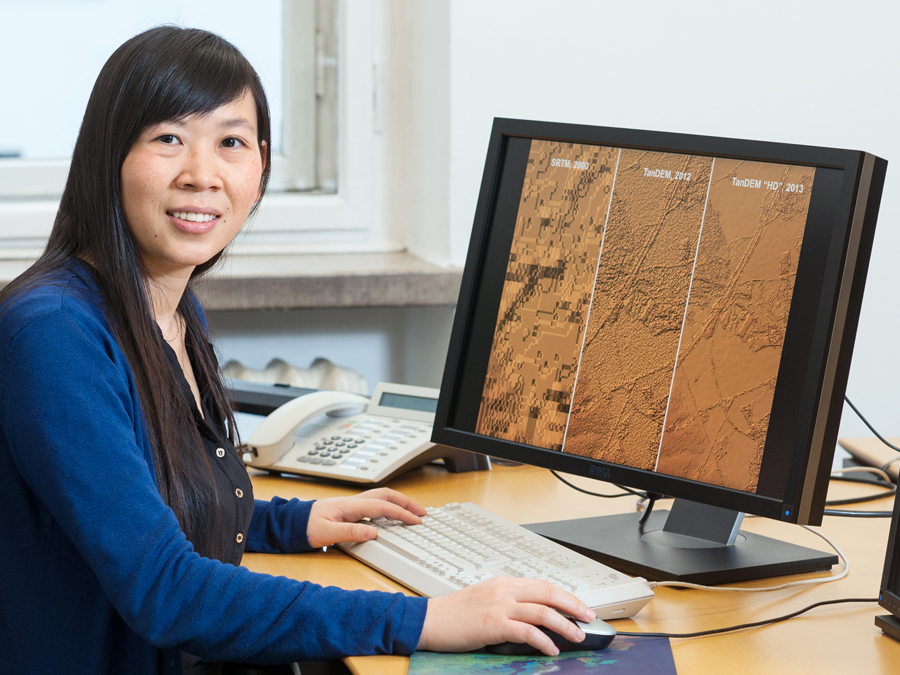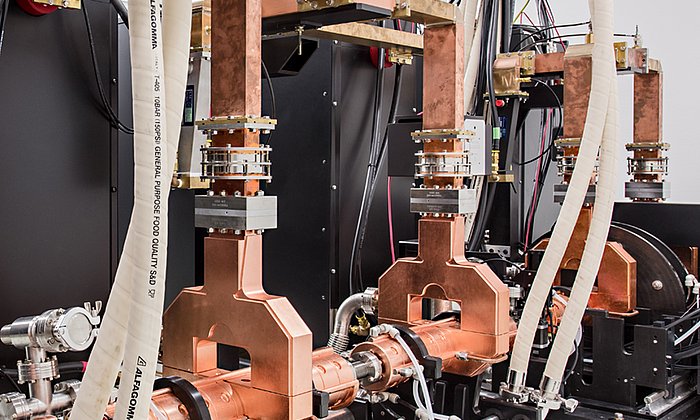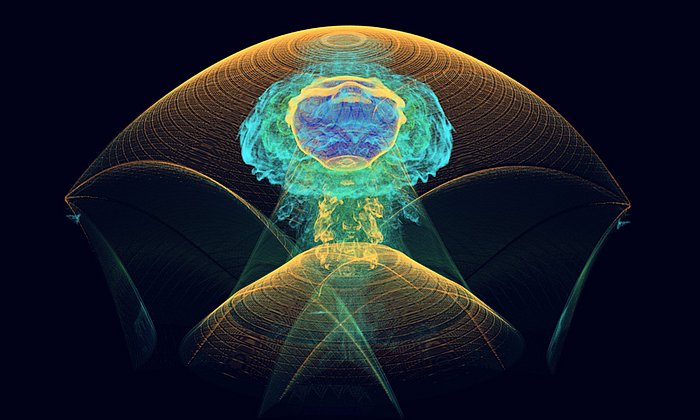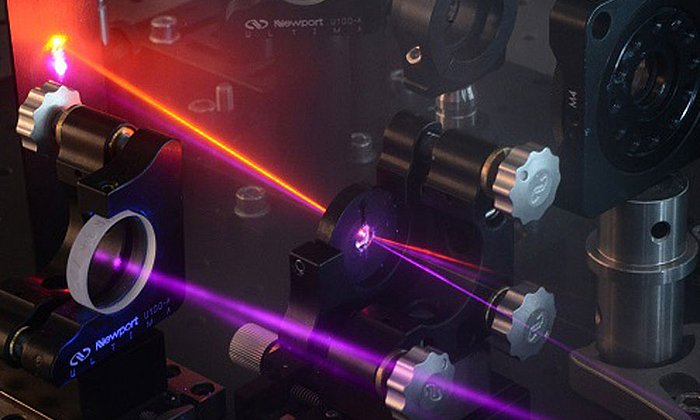Scientists at TUM receive ten ERC Grants
European Union funds research projects

The ERC supports the ten research projects with a combined 13.7 Million Euros. Since 2008, TUM researchers have been honored with 71 ERC-Grants. There are several categories of ERC Grants: Starting Grants are intended to support promising young researchers at the start of their careers; Consolidator Grants are targeted to researchers seven to 12 years after the completion of their doctorates; Proof of Concept Grants are awarded to scientists ready to test the market readiness of the research they’ve conducted previously with ERC grant support.
In early 2017, the ERC is also expected to announce its selection of recipients for its Advanced Grants. These grants are reserved for researchers with an established record of excellence in research and who have made significant contributions to the sciences over the past decade.
Consolidator Grants
Prof. Dr. Hendrik Dietz
Professor Hendrik Dietz, TUM Chair for Experimental Biophysics with the Department of Physics has been awarded an ERC Consolidator Grant for his research into “DNA Origami Motors.”
DNA Origami is exactly what the name implies. Similar to the way in which the traditional art form of origami uses paper folding to create intricate shapes and designs, DNA origami involves the folding of organic DNA material into complex, nanoscale 2D and 3D shapes. Professor Dietz and his team conduct research into how to build DNA origami motors, machines inspired by mechanisms occurring in nature, such as in the flagella of certain bacteria. The goal of research: to achieve directed movements with these motor units. In the future, these motors could be of practical use in nanotechnology, for example to actively propel nanoscale drug delivery vehicles.
Professor Dietz obtained his doctorate at TUM in 2007, subsequently worked as a post-doctoral researcher at Harvard Medical School, and has been a professor of experimental biophysics at TUM since 2009. He is a Carl von Linde Senior Fellow with the TUM Institute for Advanced Study (IAS) and previously received an ERC Starting Grant for his work into DNA origami in 2010.
Prof. Dr. Thomas Neumann
Thomas Neumann is a professor for database systems with the TUM Department of Informatics. His research focuses on improving how databases work – from query optimization to query processing. His grant-winning research proposal, “The Computational Database for Real World Awareness,” focuses in on two major hardware trends:
First, that main memory sizes continue to grow significantly. Second, the number of processing cores in a system continues to grow from the current average of around 60 today to hundreds in the near future. Both trends will enable database users to have, among others, the ability to compile, analyze and conduct deep exploration of large volumes of data online, in parallel to regular transaction processing – and, most significantly, the ability to do so in real time. Currently, deep data exploration is performed outside of the database system, which necessitates huge data transfers and costs significant amounts of time and computing power. This impedes processing and makes real-time, interactive data exploration impossible. Prof. Neumann’s research proposal will focus on utilizing cores to build a powerful computational database engine – which will allow for real-time interaction with large volumes of data.
Professor Neumann joined the TUM Department of Informatics in 2010. He studied business information systems at Germany’s University of Mannheim, earning a doctorate in informatics in 2005. Before joining TUM, he was a senior researcher at the Max Planck Institute for Informatics in Saarbrücken.
Prof. Dr. Stephan Sieber
Professor Stephan Sieber, Chair of Organic Chemistry II receives an ERC Consolidator Grant for his project „Chemical proteome mining for functional annotation of disease relevant proteins“ (CHEMMINE), searching for disease relevant proteins.
Despite the great success of genome sequencing projects and bioinformatic sequence similarity searches, a large fraction of cellular proteins remains functionally uncharacterized. Sieber’s project approaches this challenge by utilizing chemical tools for mining the proteome, i.e. all proteins in a cell, to elucidate the function of selected candidates that are relevant for diseases. The functionalized molecules are derived from metabolite structures which are bound by many proteins.
Based on this interaction with the metabolite, the mining tools report a putative conserved function which will be further elucidated in follow-up experiments. This research not only aims to unravel fundamental knowledge about these relevant proteins but also to develop inhibitors which will be tested for their biological activity.
Stephan Sieber was appointed to the Chair of Organic Chemistry II at TUM in 2009. His special focus is the development of new strategies against multidrug-resistant bacteria. In 2010, he already received an ERC starting grant and an EXIST start-up support for the AVIRU project, which was established based on his research.
Starting Grants
Dr. Tim Czopka
Dr. Tim Czopka of the Institute of Neuronal Cell Biology at the TUM School of Medicine conducts research into the development of the central nervous system. He intends to use the ERC Starting Grant to accompany all the cells of a given type in the nervous system throughout the entire development of an individual organism for the first time.
Tim Czopka is particularly interested in oligodendrocyte progenitor cells. These cells form myelin, the "white matter" of our brain, which surrounds the neural pathways. Myelin insulates nerve fibers the same way the plastic insulation shields an electric cable, enabling the rapid transmission of information and also playing an important role in learning processes. Myelin progenitor cells are found in the bodies of humans and other vertebrates in all stages of life. They can reproduce and in various cases are transformed into myelin cells, for example when the myelin sheath of a nerve fiber is damaged. Dr. Czopka uses new imaging methods to observe in zebrafish how the various progenitor cells change during the lifetime of an animal, for example when and under what circumstances they transform, when they reproduce, when they die off and how aging impacts their behavior. The knowledge gained in the research project will make it easier to understand how external and internal factors influence the cells of the nervous system and in doing so maintain its proper function.
Dr. Tim Czopka studied Biology at the RUB (Ruhr Universität Bochum) where he also earned his PhD at the RUB Graduate School of Neuroscience. Following five years of postdoctoral research at the University of Edinburgh, he has been an Emmy Noether group leader at the TUM Institute of Neuronal Cell Biology (TUM-NCB) since 2015. The Emmy-Noether program of the German Research Foundation (DfG) supports researchers in achieving independence at an early stage in their scientific careers.
Prof. Dr. Ville R. I. Kaila
Biological energy conversion is catalyzed by complex membrane proteins that efficiently transduce redox and light-energy into other energy forms. These molecular machines are powered by so-called proton-coupled electron transfer (PCET) reactions, but their fundamental mechanistic principles are not well understood.
In his ERC project, Professor Ville R. I. Kaila and his team will study functional elements that establish the PCET machinery in a giant redox-driven proton-pump, the respiratory complex I. The team will further employ these functional principles to design new man-made enzymes by combining computational multi-scale simulations and biophysical experiments.
The function and dysfunction of complex I possess profound biomedical relevance, since about half of all mitochondrial disorders in humans are related to an impaired complex I activity. Furthermore its various modules also serve as excellent models for understanding mechanistic principles of biological energy catalysis and will thus be used as blueprints for developing new biomimetic energy technology.
Professor Kaila studied at the University of Helsinki, Finland. After completing his PhD in 2009 he was awarded a long-term fellowship by the European Molecular Biology Organization (EMBO) and joined the Laboratory of Chemical Physics at the US National Institutes of Health (NIH). In 2013 he was appointed tenure track professor of Computational Biocatalysis at TUM. Prof. Kaila has also studied classical violin at the Sibelius Academy, Helsinki, Finland, and actively performs as a musician.
Prof. Dr. Konrad Tiefenbacher
Nature is a rich source of biologically active molecules, among which the largest and most diverse group of natural products are terpenes. Essential drugs like the cancer medication taxol (trade name paclitaxel) or the malaria drug artemisinin belong to the terpene family. They are efficiently formed in nature through a so-called tail-to-head terpene cyclization.
Since hitherto chemists are not able to mimic this process with man-made catalysts. Professor Konrad Tiefenbacher's ERC-project aims at closing this significant research gap by utilizing supramolecular chemistry. Learning how to design such complex catalysts will not only enable the researchers to mimic natural enzymes, but to enter uncharted territory of terpene chemistry by utilizing new terpene cyclization precursors.
Prof. Konrad Tiefenbacher received his chemical education at the Technical University of Vienna. Later he changed to the University of Vienna. In 2010 he moved to The Scripps Research Institute in La Jolla (USA). In December 2011 he started his independent career as a Juniorprofessor at the Technical University of Munich. In June 2016 he was appointed to a dual tenure track assistant professorship at the University of Basel and the ETH Zürich.
Prof. Dr. Agnieszka Wykowska
At the Institute for Cognitive Systems of the TUM Department of Electrical and Computer Engineering, Professor Agnieszka Wykowska investigates the interaction between humans and robots: Do we relate to machines the same way we relate to others of our own species? Do we assume that machines understand us? Or do we intuitively expect robots to "work" differently from humans?
The answers to these questions are crucial in the continuing development of Artificial Intelligence. Today, use of search engines and navigation systems is already commonplace. In the future robots will take over more and more work for us. But how do we communicate with them? Humans are social animals capable of empathizing with other members of our species. When we see someone reaching for a glass of water, was assume the individual is thirsty and wants to quench his or her thirst. Do we interpret the actions of a robot in the same manner?
In the project InStance Professor Wykowska uses cognitive neuroscience methods to investigate how humans react to the gestures and facial expressions of a humanoid robot. The project is to identify and describe for the first time the unconscious reactions on the part of test subjects when a robot says something to them or shows them something. Here the researchers measure brain waves and heart rate as well as eye movements and pupil dilation.
Wykowska has been a Senior Research Associate at the TUM Institute for Cognitive Systems since 2013 and Adjunct Teaching Professor at the LMU Chair of General and Experimental Psychology. Since March 2016 she has also been Professor of Engineering Psychology at Lulea University of Technology in Sweden. She will conduct the project InStance at the Italian Institute of Technology (IIT).
Prof Dr. Xiaoxiang Zhu
Professor Xiaoxiang Zhu's is signal processing in earth observation. In her ERC project So2Sat she uses a new method to investigate how cities grow. More and more people move to metropolitan areas. In 2050 three fourths of the world's population will live in metropolises, a fact that presents an enormous challenge to urban planners and logisticians. Planning requires data which has been hard to obtain in the past. In many mega-cities nobody knows how many people live in slums or refugee settlements.
Xiaoxiang Zhu intends to close these knowledge gaps using a new mapmaking method. Here she uses data supplied by several German and European earth observation satellites, which are equipped with innovative sensor technologies. Zhu develops new algorithms for the derivation of geo-information from these measurements. This makes it possible to create high-resolution images suitable for the detection of natural hazards and the mapping of cities. For the first time, this information will also be combined with data from social networks: Crowdsourcing platforms such as OpenStreetMap provide up-to-date map material; photos posted to the network provide authentic and current images in which buildings can be seen or which for example reveal the extent of damage caused by a flood. The major challenge here is consolidating this information and evaluating it automatically using machine learning methods. Zhu's objective in the project So2Sat is to map cities and their population densities and to make the data available to the research community.
Prof. Xiaoxiang Zhu has been Professor for signal processing in earth observation at the TUM Department of Civil, Geo and Environmental Engineering since 2015. She is also Scientific Researcher at the DLR (German Aerospace Center) and leads a research team and a Helmholtz junior university research group at the DLR and the TUM. She has received numerous awards for her research, including the "Heinz Maier-Leibnitz Prize" of the German Research Foundation (DFG).
Proof of Concept Grants
Prof. Dr. Andreas Bausch
Liquid handling is an integral part of biological and medical assays. For many applications the method of choice is manual pipetting – although it is user-time intensive and prone to sample handling issues. While liquid handling robots do exist, they are large and expensive instruments, targeted for high-throughput applications. This leaves, in practice, most research and diagnostics without an automated solution.
Within the ERC-funded project SelfOrg Professor Andreas Bausch and his group developed a small automated liquid handling (AutoLiqHand) device for individual users. The microfluidic-based platform automates biomedical experiments and diagnostic routines. Moreover, its unique design enables it to run in a much larger range of biomedical settings than existing solutions – and at the fraction of the cost. The Proof-of-Concept project aims at the adaption of the AutoLiqHand platform to market needs and optimizations easing its production.
After studying physics at TUM and the Université de Montréal, Andreas Bausch received his doctorate at TUM in 1999. An Emmy Noether scholarship enabled him to study at Harvard University (Boston, USA). Since 2008 Prof. Andreas Bausch holds the Chair for Cellular Biophysics at TUM. His research is devoted to the quantitative understanding of the mechanical properties of the cytoskeleton and the microscopic mechanisms of self-organization. A further research focus is the identification and physical characterization of new biomimetic materials.
Prof. Dr. Rüdiger Westermann
A Proof of Concept Grant goes to Professor Rüdiger Westermann für das Projekt „Vis4Weather“. for the project "Vis4Weather". Based on research results of Westermann's ERC Advanced Grant "SaferVis - Uncertainty Visualization for Reliable Data Discovery" and research from the DFG-funded transregional Collaborative Research Centre "waves, clouds, weather" the practical applications of visualization of the fuzziness of weather data shall be explored.
In the scope of the ERC Advanced Grant “SaferVis”, Westermann and his group have developed the open source software tool Met.3D for 3D weather forecast visualization. Met.3D enables visualizing the uncertainty that is present in an ensemble of weather forecasts, and helps studying the atmosphere by analyzing its spatial and temporal aspects.
In the ERC-funded Proof-of-Concept project “Vis4Weather”, Westermann and his coworkers aim to study the potential of an operational use of Met.3D at weather centers, the potential of Met.3D for training forecasters, decision makers and researchers in 3D ensemble visualization, the possible societal impact of (3D) ensemble visualization for communicating uncertainty in forecasts of high impact weather events to the public, and Met.3D’s potential for commercialization via subcontracting and suppling operational tools to the weather centres, like the ECMWF and the Germany's National Meteorological Service (DWD).
Rüdiger Westermann is Professor of Computer Graphics and Visualization at TUM. His research interests are computer graphics, scientific visualization and numerical real-time simulation. He focuses on the development of efficient algorithms for interactive data exploration and the physical simulation of processes in virtual environments as well as their realization on many-core computer architectures. His central research contributions in recent years are in the areas of volume visualization, the multiscale simulation with finite elements and the hierarchical data representation.
Technical University of Munich
Corporate Communications Center
- Paul Hellmich
- paul.hellmich@tum.de
- presse@tum.de
- Teamwebsite


